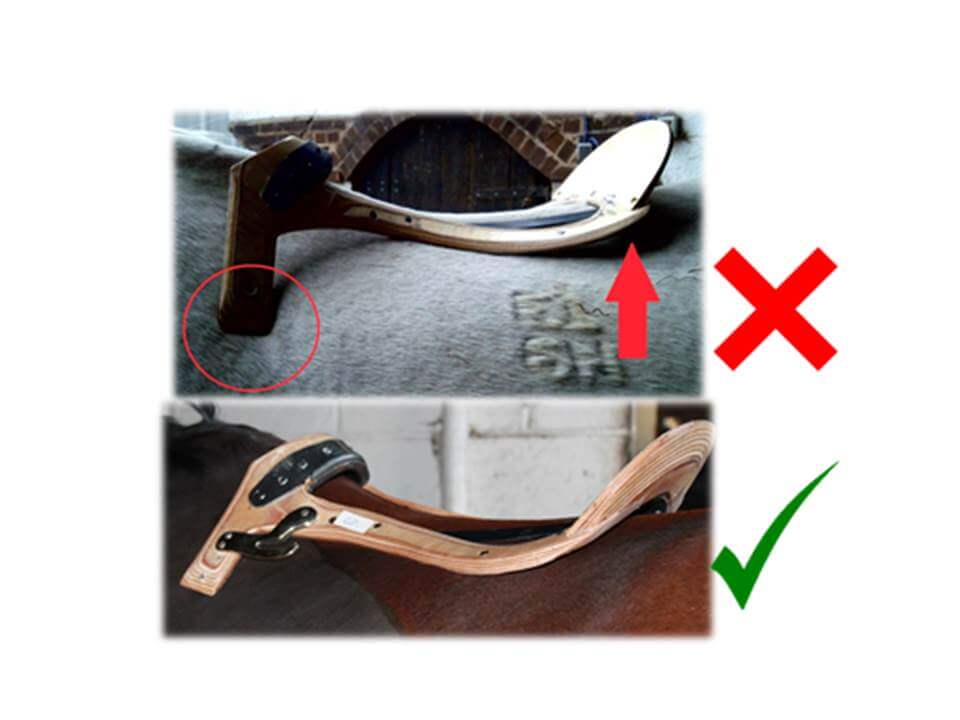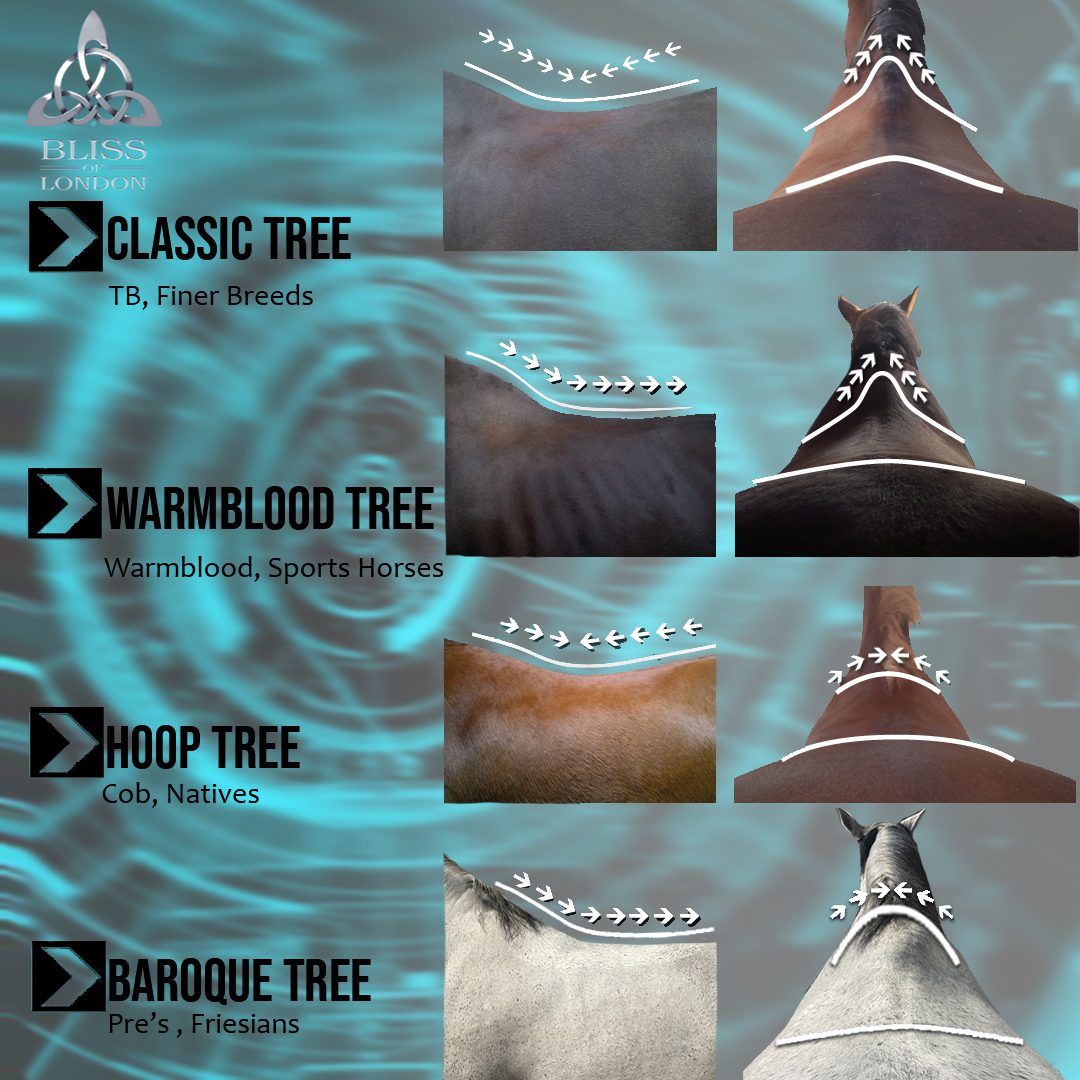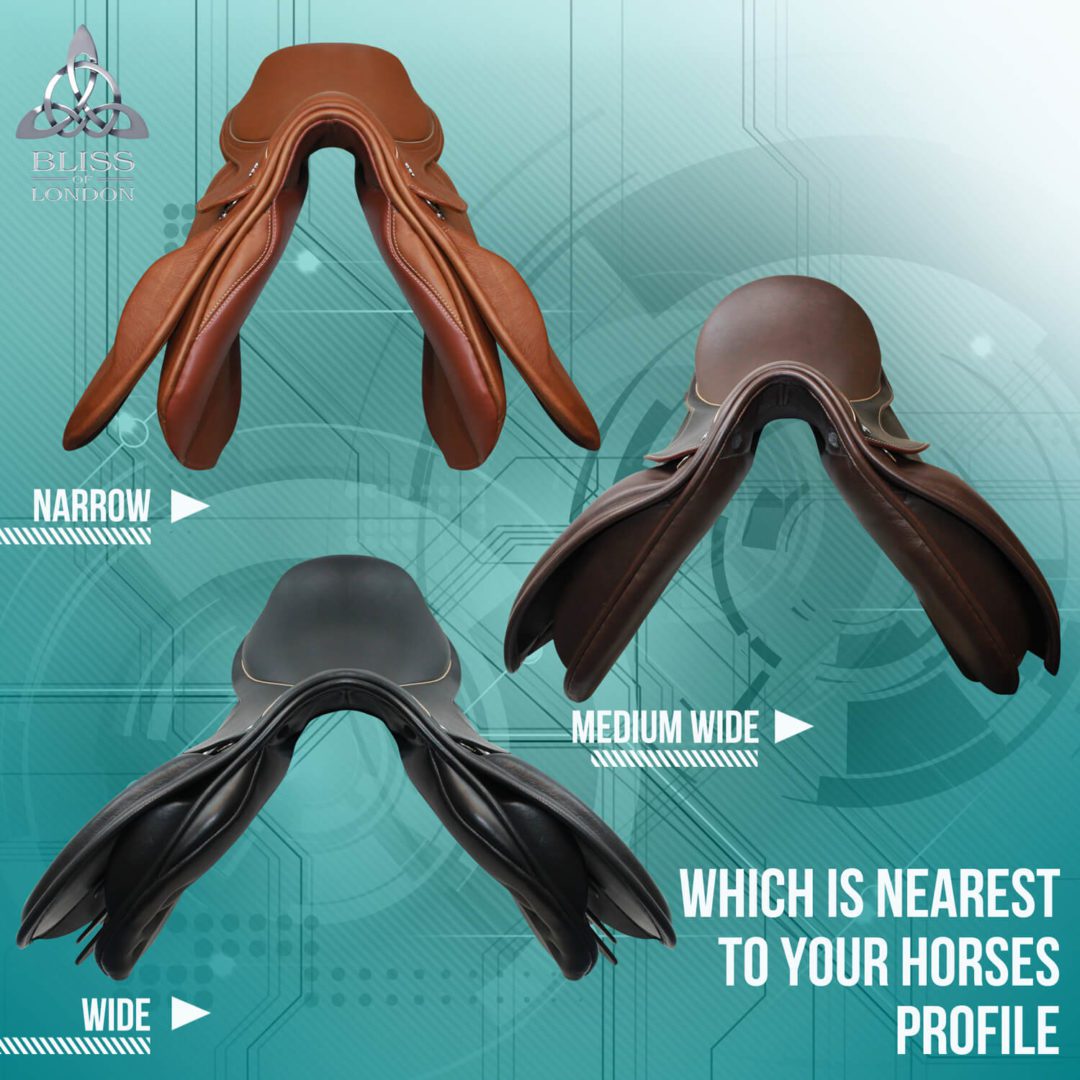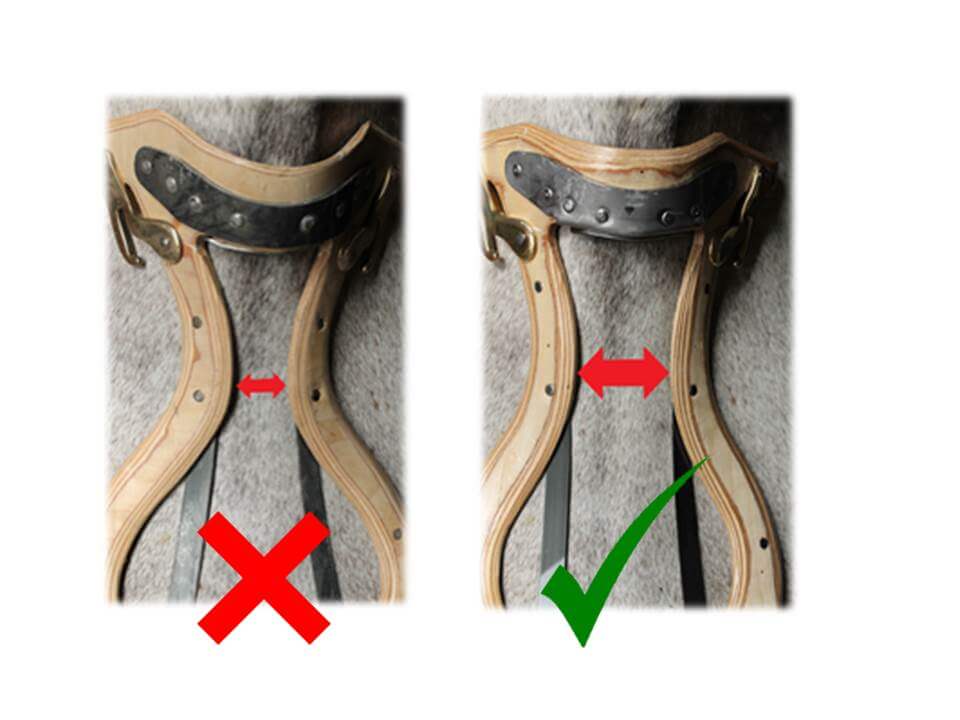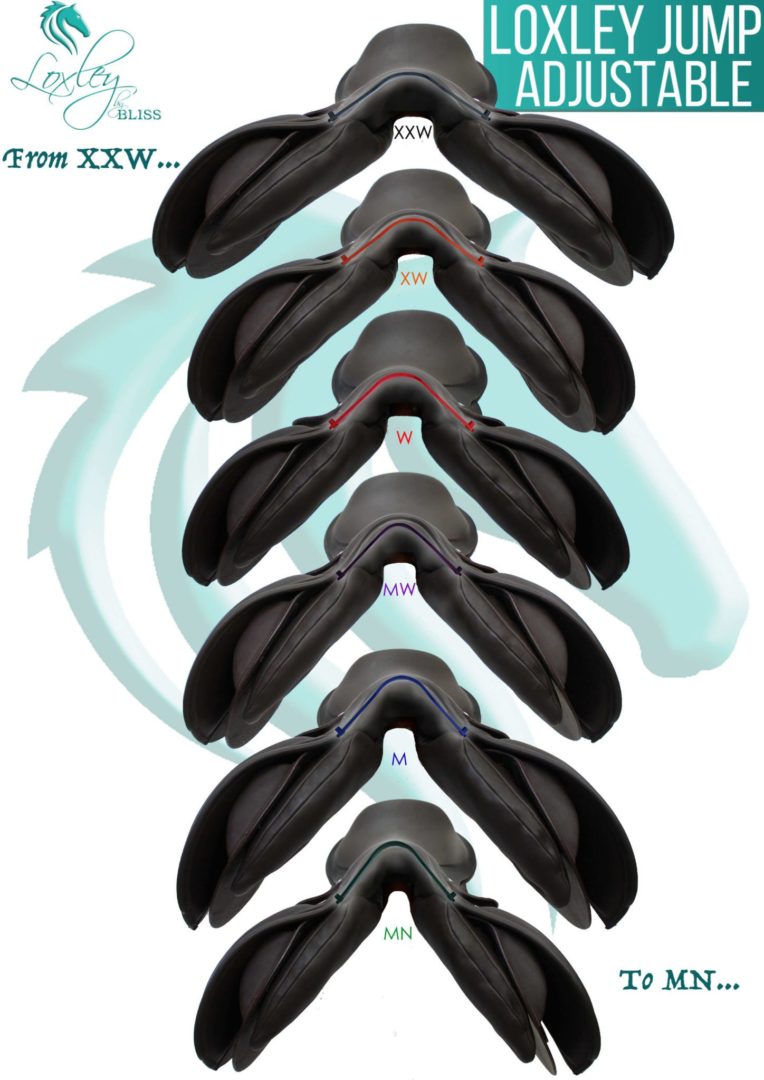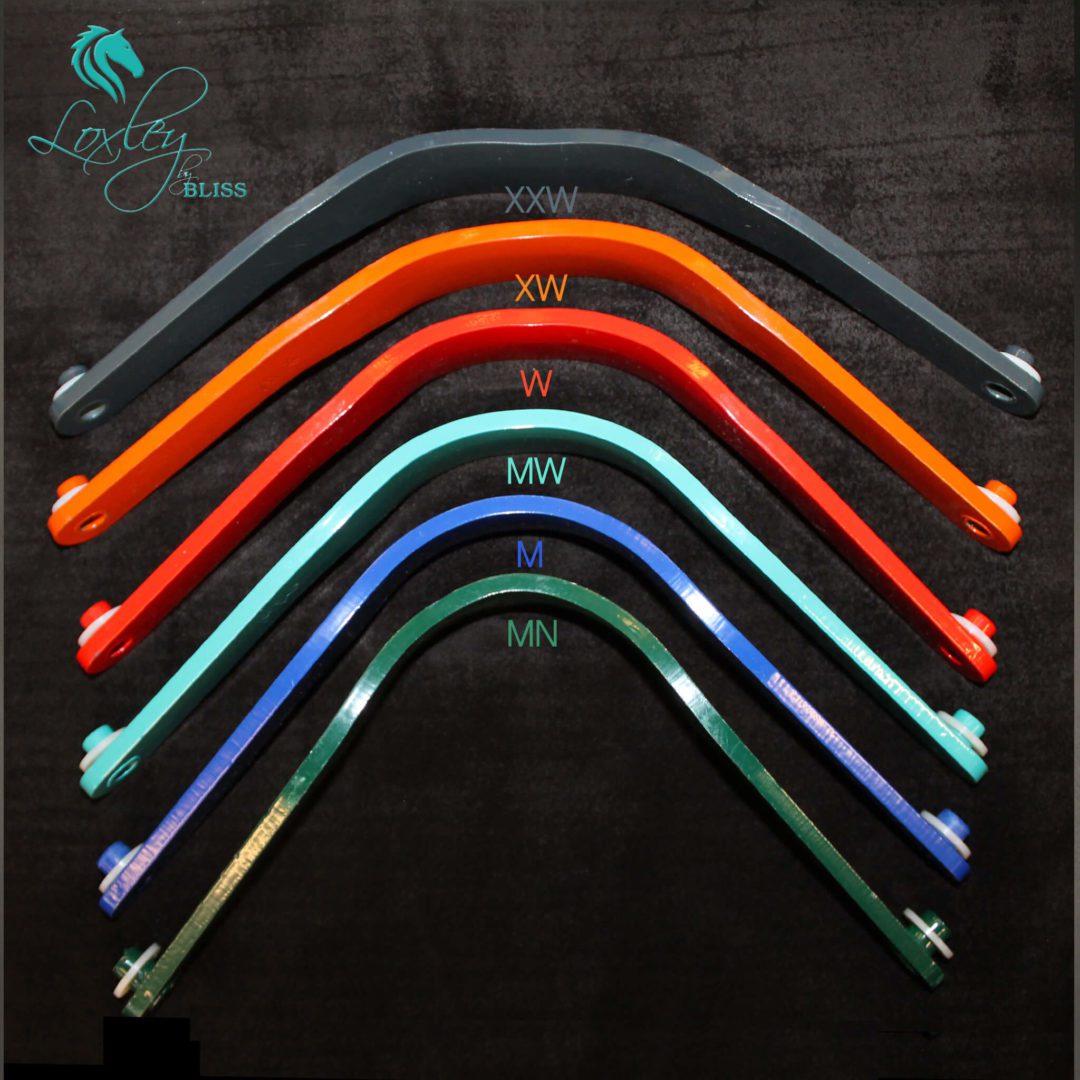Tree Options
Our guide to help you understand what is the best tree for your horse’s profile
The tree forms the framework, it is the ‘chassis’ of each and every saddle. This is why it is so imperative that the correct profile is selected by your saddle fitter.
All of our trees are manufactured by Lariot to BS:6635 2003. The British Standard for saddle trees, so we are confident as to the quality and reliability of our product.
The tree forms the framework, it is the ‘chasis’ of each and every saddle This is why it is so imperative that the correct profile is selected by your saddle fitter, to mirror the shape of your horse’s back in order to distribute the weight of the rider effectively over the maximum acceptable surface area of the horse’s back, thus reducing pressure.
We offer a Fully Adjustable polymer tree (see below for further details) and a number of traditional wooden tree profiles through all discipline models and sizes.
Here are some examples of the most commonly used.
CLASSIC TREE: a classically styled tree, built with an ‘Ʌ’ shaped head and gentle curve in the body. Works well with the majority of profiles from TB through to some of the finer Warmbloods.
HOOP TREE: a broader and low profile tree with inverted ‘U’ shape head and slightly flatter through the body. Offering a slightly wider gullet and flatter rails often works well on profiles of Baroque, Draught, Native and some heavier old style Warmbloods.
WARMBLOOD TREE: as the name suggests, designed specifically for the more modern warmbloods which are now featuring higher wither profiles than before but still with the broad spine and back structure. A flatter horizontal profile for straighter long backs and flatter lateral profile at the back for broader backs.
CLOSE CONTACT TREE: a continental style tree which in turns offers a close contact minimal style panel, as opposed to the previous two which allow for greater panel and gusset depths. The close contact is therefore suited to horses with a good top line. More regularly used on Jump saddles only.
PONY TREE: works particularly well for small saddles, starting at 15” whether dressage, jump or GP. A broad head and neat profile to offer a close contact panel most suited to smaller ponies and riders.
BAROQUE: This new tree has been designed with the specific requirements of the Andalusian, Lusitano, PRE, Lippizaner and Friesan breeds in mind.
Some manufacturers work on cm’s for measurement but this can vary depending upon the length of the tree points so we prefer to work on angles as tabled below. Please note this is only a guide.
| TREE WIDTHS | Angle | Distance between points |
| N | 75° | approx 26cm |
| N/M | 80° | approx 27.5cm |
| M | 85° | approx 29cm |
| M/W | 90° | approx 30.5cm |
| W | 95° | approx 32cm |
| XW | 105° | approx 33.5cm |
| XXW | 115° | approx 35cm |
Gullet width is a very popular topic recently but for good reason. The width between the rails of the tree is foundation to the ultimate gullet width. The panels of the saddle in order to disperse pressure must be supported by the rails of the tree so it is vital that they are broad enough to do this. A narrow twisted tree as seen below which is often a favourite for riders comfort will either have a narrow gullet or alternatively the panels will sit either side of this and not be supported sufficiently.
We also offer in both the Bliss and the Loxley range, a fully adjustable polymer tree. This has a removable gullet bar which allows for more flexibility of fit within the saddle itself. Whereas wooden trees are adjustable within one width fitting, the advantage of the adjustable tree means it can be changed from a Narrow Medium through to an Extra Extra Wide.
The gullet bars as you will see in the image below broaden in the head in accordance to the width, with the narrower fits have a more A frame shape and the wider fits expanding to a more Hoop (inverted U) shape.


